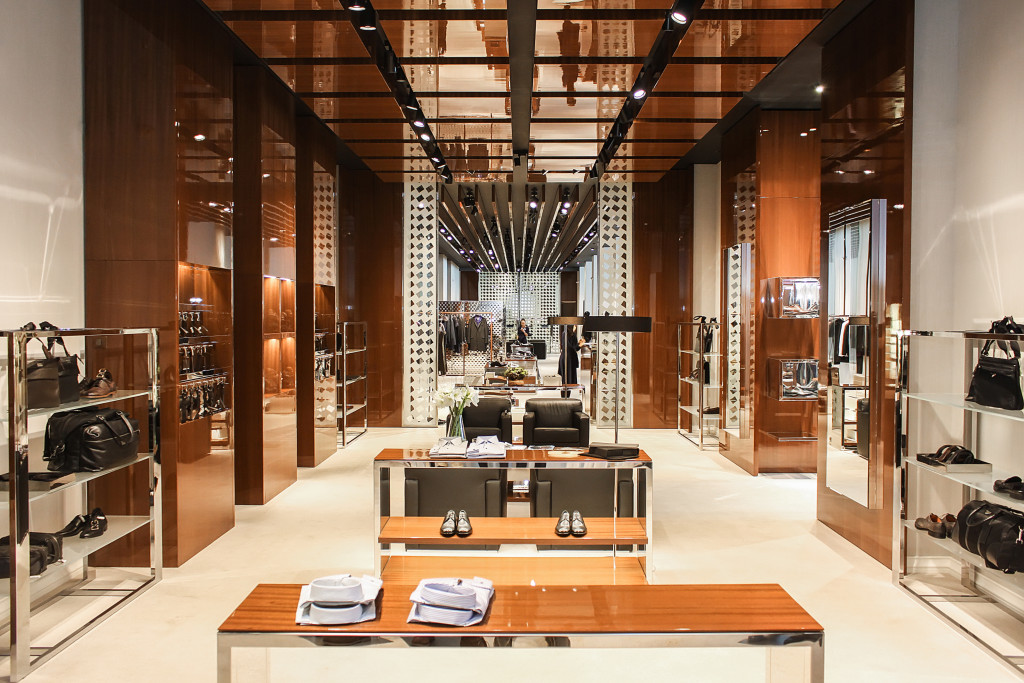- Define your brand, target audience, and align your store’s design with your brand personality and story.
- Prioritize essential elements like window displays, signage, and focal points to attract and guide customers.
- Implement a logical, customer-friendly store layout that encourages exploration and facilitates easy navigation.
- Partner with a design team that understands your brand for custom, effective retail store design solutions.
The retail store design is crucial in attracting customers and enhancing their shopping experience. It is not merely an aesthetic aspect but a strategic tool affecting customers’ perceptions and buying decisions. According to a study by KPMG, approximately 56% of consumers said that an enjoyable in-store atmosphere forms part of the reason they buy in-store rather than online. Moreover, a Retail Customer Experience survey indicates that 40% of customers will spend more time in a store if they deem the atmosphere enjoyable. Consequently, retail store design is a significant factor in a brand’s success and can significantly impact its bottom line.
However, it can be challenging to identify the specific design elements that will create a desired atmosphere. Whether decorating a new store or refreshing an existing one, here are some critical steps to consider:
Define Your Brand

Before making any design decisions, it’s crucial to understand your brand identity clearly. This includes your mission, values, and the unique characteristics that differentiate you from competitors. Your brand identity should resonate throughout your store, providing a tangible representation of what your brand stands for.
Identify Your Target Audience
Your target audience’s preferences and expectations should guide your store’s design. Age, gender, lifestyle, and buying behaviors are just a few of the factors that can influence your design choices. Creating a detailed customer persona can assist in visualizing your typical customer and guide your design decisions.
Align Your Design With Brand Personality
Your brand personality is essentially the human characteristics associated with your brand. Whether your brand is fun, sophisticated, or adventurous, your retail store design should reflect and reinforce this personality. Colors, materials, lighting, and layout can all be leveraged to embody your brand’s personality.
Communicate Your Brand Story
Your retail store offers an opportunity to communicate your brand’s story visually. This can be achieved by carefully selecting design elements, product placement, and in-store music. You engage customers and create an emotional connection by sharing your story, encouraging brand loyalty.
Prioritize the Essentials
Designing a retail store is a complex process with many factors to consider. Prioritize the essential elements before focusing on more minor details. It’s best to start by making broad decisions and then concentrating on the details before opening day. Here are a few strategic areas to prioritize:
Highlight Promotions with Window Displays
Window displays are an effective way to attract foot traffic and entice customers into your store. They offer an opportunity to showcase your products, announce sales or promotions, and reflect on the season or upcoming holidays. For instance, Macy’s holiday window displays are iconic and highly anticipated, drawing customers into the store.
Use Signage to Communicate Offers
Signages don’t only assist with navigation; they are also a powerful marketing tool. Clear signage can highlight special offers, new arrivals, or bestsellers, guiding customers toward purchasing. Supermarkets often use signage to mark discounted items or deals, encouraging impulse buying. You can partner with a company that produces quality indoor signage to create high-quality signage tailored to your brand.
Create Focal Points in Store Layout
Creating focal points in your store layout can draw attention to specific products or collections. This could be a display table in the center of the store, an end-cap display at the end of an aisle, or a highlighted wall. For example, Apple stores often use focal points to showcase their latest gadgets, creating a sense of excitement and urgency among customers.
Prioritize Store Navigation

Ease of navigation is a vital aspect of retail store design. A well-planned store layout that allows customers to move freely and effortlessly can significantly enhance the shopping experience and potentially boost sales. When customers can find what they need quickly and efficiently, they will likely spend more time looking at other products, increasing their overall shopping time and possibly spending.
Clear and strategically placed wayfinding signs can guide customers around your store and help them find what they’re looking for without assistance. This might include aisle markers, department signs, and directional arrows.
Consider a logical flow when arranging your products. Group related products together and place popular items at the back of the store to encourage customers to explore different sections.
Ensure customers have enough space to move around comfortably, especially during peak hours. Overcrowded aisles can make it difficult for customers to navigate and locate products, potentially frustrating and shortening their visit.
Final Thoughts
Attractive and appealing design is central to the success of any retail store. It can create a positive customer experience, increasing foot traffic, basket size, and profitability. The steps mentioned above are just some considerations when designing a retail store; however, each brand has unique needs that require custom solutions. To ensure success, you must partner with a design team that understands your brand and can create solutions tailored to your needs. By doing so, you will be well on your way to creating an inviting retail store that resonates with customers.
